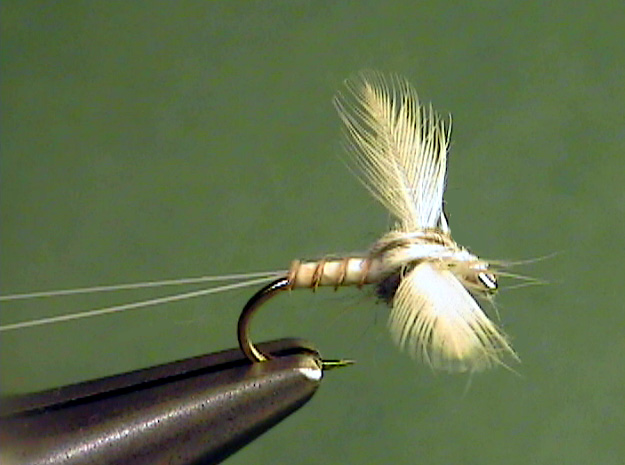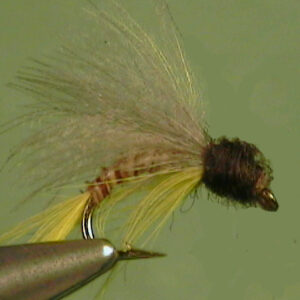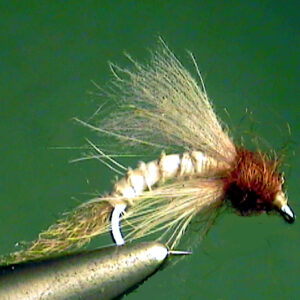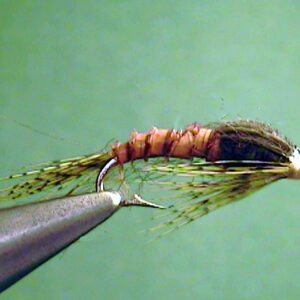Hook Size: 14/16
The Perfect Fly Cream Cahill Spinner is a imitation of the spinner stage of life of the mayfly. Once the dun reaches the banks, trees or bushes, it molts into a spinner, or the sexually mature adult. The males and females return to the water and mate in mid air, and eventually fall dead on the surface of the water where trout can easily dine on them. It should be fished on the surface and treated with floatant.
We have seen Cream Cahill spinners depositing their eggs at different times –
late afternoons and early evenings, even in the morning. We have watched
brook trout eat them while they were darting around on the surface of the water
depositing their eggs.
Presentation:
If you discover these mayflies depositing their eggs, I would suggest that you fish
an imitation of the spinner. You should fish it on the same type of water you see
them hatching in. Most likely that would be the ends of the runs and riffles. The
spent spinners may congregate in the eddies and pockets along the banks and
behind rocks and boulders. Clinger mayflies deposit their eggs in the same fast
water they hatch in. If you discover spent spinners on the surface in eddies or
the ends of riffles and runs, you should fish this fly.
We have never found a large concentration of them. They are mostly scattered
and sparse spinner falls. That may be because most of them deposit their eggs
during the evening hours. It’s also a good idea to check for them in the early
mornings if you have discovered the Cream Cahills hatching.
Copyright 2013 James Marsh




